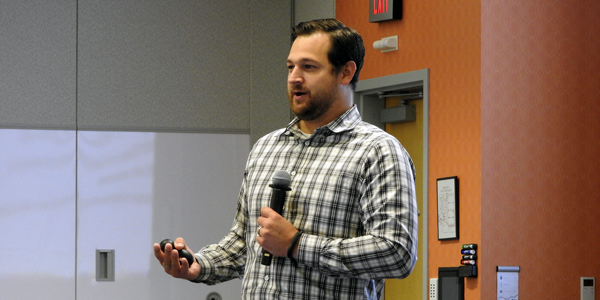VALLEY FORGE, Pa. — PJM staff last week outlined recommendations it developed to address a mysterious frequency drop on July 10. (See “Low Frequency,” PJM Operating Committee Briefs: Aug. 7, 2018.)
PJM saw its frequency drop to 59.903 Hz at 3:49 p.m. as its area control error fell 2,942 MW below its target. The RTO said the incident resulted from multiple unit trips, non-approved real-time security-constrained economic dispatch (RTSCED) cases, a drop in Eastern Interconnect frequency and poor synchronized reserve response.
Staff made recommendations for all but one of the causes. Removing ambiguity in operating procedures regarding parameter-limited schedules would address units called online that didn’t respond. Analyzing unit-tripping trends would help determine why multiple units tripped. Creating a procedure that helps dispatchers decide whether RTSCED data is valid based on system conditions would address why the RTSCED cases weren’t approved during the incident.
PJM also plans to stop approving time error corrections during emergency procedures or frequency excursions, which it said can exacerbate problems.
“It takes several hours at a lower frequency to get that time error back; there’s kind of an inherent risk whenever [you] go off 60 Hz,” PJM’s Donnie Bielak said. He added that simply scheduling time error corrections at night also isn’t a good idea because it would push units into minimum-generation operations that don’t allow them full flexibility to respond to other system changes.
Bielak said an unexplained drop in frequency across the entire Eastern Interconnection accounted for half of the problem.
“We’re certainly looking to get to the bottom of that,” he said.
Preliminary Budget

PJM’s Jim Snow presented the RTO’s preliminary project budget for 2019, which anticipates spending approximately $42 million on capital expenditures. The vast majority — approximately $39 million — will go to existing assets, including applications, systems reliability, replacements, facilities and infrastructure.
In response to a stakeholder question, Snow said about $4.4 million in projects were considered but deferred, including hardware replacements, enhancing existing monitoring tools, automating the Regional Transmission Expansion Plan and other corporate reports, implementing soak time by adding generator ramp time to day-ahead markets, and implementing a tool to register energy efficiency and non-retail behind-the-meter generation.
“This is part of a larger process,” Snow said.
At a separate presentation before the Planning Committee later in the week, Snow confirmed that the budget can be revised to address any issues that arise that require commitments from PJM.
“I would tell you if FERC issued an order, we would go back and reprioritize,” he said.
The response satisfied Greg Poulos, the executive director of the Consumer Advocates of the PJM States.
“I want to make sure there’s enough resources allocated to the Planning Committee to make sure they can get their job done,” he said.
New Reactive Transfer Interfaces

PJM’s Christina Catalano introduced two changes to reactive transfer interfaces, which the RTO uses to control voltage contingencies associated with high transfers during transmission outages.
The Central Pennsylvania interface, which includes the Lackawanna-Hopatcong, Sunbury-Juniata and Susquehanna-Wescosville 500-kV lines, was modeled to accommodate an increase in gas-fired generation in the region and planned maintenance outages on the 500-kV system. One such outage is planned for Oct. 16-20.
Catalano said staff anticipate the interface only becoming significant during the outage in case a second transmission line goes out. PJM’s Paul McGlynn said “additional contingency would go beyond any criteria we have.”
In the Western Interface, staff are adding the new Vinco substation near Conemaugh on the 500-kV line to Hunterstown. It will become effective when the Vinco substation is energized, which is expected on Oct. 16. Because of its proximity to the Conemaugh substation, staff expect minimal impact.
— Rory D. Sweeney




